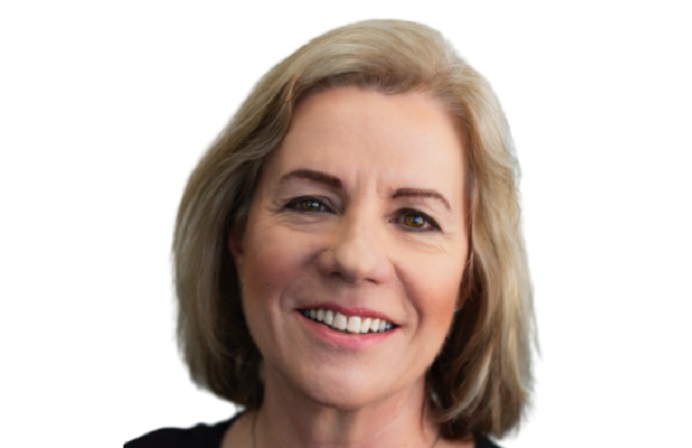
FST Media: What are your priorities for the next 12 to 18 months?
Gledhill: Over the next 12 to 18 months, our three overarching technology priorities are: to build world-class robust capability and world-class infrastructure; build nimbleness in the organisation; and to foster the spirit of innovation, encouraging staff to ‘go explore’.
A robust infrastructure remains at the forefront of what we do, especially in the context of the fast-evolving landscape. Our ability to respond quickly to customers and to new technologies will be a key enabler of an organisation. Hence, being ‘nimble’ and driving innovation are critical to our success.
As customers embrace a more digital lifestyle and the way they bank, we see the opportunity to leverage new technology to make the customer experience more interactive and intuitive, integrating banking solutions and products into their lives in a more meaningful way, and as a result, access large retail markets.
FST Media: What will be the most significant challenge facing the financial services industry in the year ahead?
Gledhill: With new and evolving technologies, a critical challenge to the industry will be the increasing need to keep abreast of evolving challenges, and constantly boost efforts in security. Banks and other financial services organisations should also be looking at new, non-traditional competitors entering the arena, for example, in the payments and mobile solutions space. Paypal, Google and Alibaba have all made inroads, and in the future, people will still need banking, but they may not be necessarily need a bank – in the traditional way. Hence, our plan to invest SG$200 million over the next three years to establish a digital banking initiative, as part of our innovation journey.
FST Media: How is DBS leveraging mobility to deliver value to the business, and how will you extend its success?
Gledhill: At DBS, we have been leveraging a whole suite of mobile solutions, both internal and external, to enhance the customer experience. When engaging our staff, our approach was to design from the perspective of the users, and how we can drive the journey towards the future of work, through the design. We identified four different personas in the organisation (similar to job types) and we now have a roadmap for that journey, custom designed to each of those.
From the perspective of the customer, leading edge mobile solutions are fast becoming a hygiene factor. Mobile usage is growing at a very high, double-digit rate year-on-year. From our experience, customers are much more willing to transact on their mobile devices. This means that we now have more opportunities to interact with our customers more frequently on those mobile devices.
FST Media: How should banks respond to the competitive threat from non-traditional players such as Google or Paypal in the mobile wallets space?
Gledhill: Increasingly, the competition for banks and financial institutions will be coming from non-traditional players such as Google, Alibaba, and Paypal. Banks can view this as a threat, or an opportunity to drive innovation. At DBS, we have taken our innovation journey a leap forward, by acknowledging the need to be at the forefront, shaping the future of banking.
Apart from an investment in the establishment of a digital banking initiative, DBS has also recently announced a partnership with A*STAR’s Institute of Infocomm Research in our home market Singapore, setting up a joint lab driving innovation through research. Leveraging the institute’s extensive network of research talent, the joint lab will be a collaborative workspace for research, experimentation and innovation, focusing on creating new ways of engaging customers through the use of innovative technology. In particular, the joint lab aims to develop commercial and executable solutions and products in the financial sector, conducting new research and leveraging existing IP in data analytics, mobile technology, social platforms and other leading edge technologies.
FST Media: How are you leveraging big data analytics to target products to individual customers and increase security measures?
Gledhill: DBS’ collaboration with IBM is among our initiatives to harness big data to deliver a better customer experience – providing more precise, customised and quality actionable insights that meet our customers’ needs.
With Asia creating wealth faster than anywhere else in the world, coupled with increasingly sophisticated and digitally-savvy customers, banking relationship managers need to be empowered with sophisticated and intuitive tools to respond more speedily with insightful and tailored solutions.
IBM Watson, an artificial intelligence super-computer, will help DBS’ relationship managers analyse large volumes of complex unstructured and structured data, including research reports, product information and customer profiles; identify connections between customers’ needs and its growing corpus of investment knowledge, and help advisors weigh various financial options available to customers.
Applying IBM Watson’s capabilities will enable DBS professionals to take control of a ‘data deluge’ and arm them with data-driven insights that can personalise the customer experience.
FST Media: What notable examples have you seen of financial organisations innovating to acquire and retain the growing Gen Y customer base?
Gledhill: The ‘Millenials’ is a consumer group that most organisations are reaching out to via digital platforms. However, in order to be truly successful in the process, it should not be just going digital for the sake of doing so. At the core of the customer experience – be it via social or mobile platforms – there needs to be meaningful engagement. In the past few years, at DBS, we have taken what our CEO calls an ‘inside-out’ approach to digital initiatives – putting our products and services on various digital platforms to enhance the customer experience. Going forward, with the commitment to building a digital banking initiative, we will look at an ‘outside-in’ approach to truly integrate banking into the customers’ digital lifestyle, and making the experience more intuitive and interactive.
FST Media: How do you see the rising roles of chief digital and marketing officers impacting the traditional function of senior technology executives?
Gledhill: Increasingly, the digital and marketing functions in organisations are beginning to crossover and become more aligned as the technology and customers needs evolve, offering more opportunities to leverage one for the other. Over the last few years, technology has moved to the forefront of how we develop product and services for the organization, rather than an afterthought. Senior technology executives and the teams they lead need to focus on that mindset shift, and drive synergy across the organisation and better collaboration, with the customer experience as the endgame.
FST Media: How do you encourage a culture of innovation in your team?
Gledhill: With the way in which customers live, work and bank changing dramatically, DBS is innovating the way it does banking. As an example, in 2010, the bank formed a Customer Experience Council and Innovation Council, both chaired by CEO Piyush Gupta, to foster a culture of innovation internally and drive our innovation journey.
To ‘go explore’ is part of the messaging and positioning that we use to articulate the point that business today need to constantly innovate. At DBS, we have built a team with the mandate to focus on innovation and driving change, with the customer experience at the core of the innovation journey.
FST Media: How do you see the role of the physical branch transforming in the years ahead, and how will DBS improve its retail branches?
Gledhill: At DBS, we have embarked on the journey to transform the physical branch by introducing technology to enhance the customer experience (for instance, having iPads and an interactive wall at our flagship branch at our headquarters at DBS Asia Central in Marina Bay Financial Centre, helps enable customers to access insights and information at their finger tips while they are in our premises). Going ahead, we are very much focused on human-centred design as a means to design and transform the customer experience in our physical spaces.
FST Media: What skills do you think aspiring technology chiefs should invest in now for future success?
Gledhill: For a start, a firm grounding in technology is still essential for with the understanding of what is going on inside the machine, one can then be able to understand and assess what solutions are available to address the customers and business needs. But beyond hard skills, we care moving into a new era whereby soft skills, such as strong communication abilities, will be increasingly important, in order to build collaboration and synergy across the organisation.
FST Media: Every leader has a legacy they wish to be remembered for, what is yours?
Gledhill: The leadership team at DBS is focused on creating the future of banking, and what I hope to be remembered for is to be part of that journey and to have helped put in place the building blocks of a great firm.
***
This interview first appeared in FST Media’s annual magazine The Who’s Who of Financial Services Asia Pacific, which launched at the Technology & Innovation – the Future of Banking & Financial Services conference in Melbourne on 4th June, 2014





